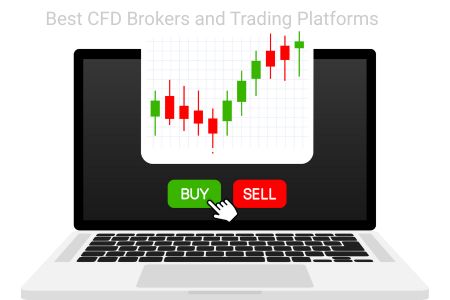Exploring the Best CFD Trading Markets A Comprehensive Guide

Exploring the Best CFD Trading Markets: A Comprehensive Guide
Contract for Difference (CFD) trading has gained traction among investors for its simplicity and the flexibility it offers. It allows traders to speculate on price movements in various markets without possessing the underlying asset. In this article, we will explore the best CFD trading markets and provide insights on how to navigate them effectively. If you’re new to CFD trading or looking to enhance your trading strategy, understanding these markets is crucial. For a detailed review of CFD brokers and platforms, visit best cfd trading markets bestbrokercfd.com.
What Are CFDs?
CFDs are derivative financial instruments that enable traders to profit from the price movements of assets without owning them. A CFD is essentially an agreement between two parties to exchange the difference in the value of an asset from the time the contract is opened to when it is closed. The flexibility of CFD trading allows participants to speculate on numerous markets, including forex, commodities, indices, and stocks. This article will delve into each of these markets, highlighting the best options for traders.
1. Forex Market
The foreign exchange (forex) market is the largest and most liquid market in the world, making it a favored choice for CFD traders. Daily trading volumes exceed $6 trillion, providing ample opportunities for traders to enter and exit trades. Popular currency pairs for CFD trading include EUR/USD, GBP/USD, and USD/JPY. Traders benefit from tight spreads and high leverage, which can amplify profits (though also losses).
In the forex market, economic indicators, geopolitical events, and market sentiment play crucial roles in determining price movements. Traders must stay informed about these factors through various technical and fundamental analyses to maximize their success.
2. Commodity Market
Commodity trading has always been a significant part of financial markets. CFDs on commodities cover a wide range of assets, including precious metals (like gold and silver), energy (such as oil and natural gas), and agricultural products (like wheat and corn). The price movements in the commodity market are influenced by factors like supply and demand dynamics, geopolitical issues, and climate conditions.
Gold and oil are two of the most traded commodities in CFD markets. Traders often use these CFDs as a hedge against inflation or economic downturns. Understanding the global supply chain and geopolitical ramifications is key to making informed trading decisions in this volatile market.
3. Stock Market

Equities remain a top choice for CFD traders, allowing them to speculate on the price movements of shares from various companies without actually owning the stocks. The stock market offers enormous diversity, ranging from tech giants like Apple and Amazon to emerging companies in diverse sectors.
Many brokers provide CFDs on a wide selection of shares, often with leverage options, allowing traders to maximize their exposure. However, they must be aware of the market trends and corporate performance metrics, such as earnings reports and economic forecasts, which can significantly affect stock prices.
4. Index Market
Trading CFDs on indices allows traders to capitalize on the performance of a basket of stocks representing a particular market segment or country. Common indices include the S&P 500, FTSE 100, and Nikkei 225. Index CFDs provide a way to trade the overall market sentiment without having to analyze individual stocks.
One of the main advantages of CFD index trading is the ability to diversify investments easily. Traders can gain exposure to multiple sectors and reduce their risk levels. The performance of indices is generally influenced by economic data releases, central bank decisions, and overall market conditions.
5. Cryptocurrency Market
Cryptocurrencies have expanded significantly over recent years, evolving from niche assets to mainstream investments. CFD trading on cryptocurrencies allows traders to speculate on price movements without needing to own the digital coins. Major cryptocurrencies such as Bitcoin and Ethereum are popular options for CFD trading.
However, while the potential for high returns is attractive, the cryptocurrency market is known for its extreme volatility. Factors like regulatory news, market sentiment, and technological developments can drastically influence prices. Successful cryptocurrency CFD traders usually apply a combination of technical analysis and market sentiment to guide their decision-making.
Conclusion
In the fast-evolving landscape of CFD trading, identifying the best markets to focus on is essential for both new and experienced traders. Each market—forex, commodities, stocks, indices, and cryptocurrencies—offers distinct opportunities and challenges. Traders should assess their risk tolerance, market interest, and trading strategies before delving into any specific market.
Furthermore, continuous education and staying updated on market trends are vital for success in CFD trading. Leveraging resources from reputable platforms and tools can provide additional support in making informed decisions. Thus, a combination of market research, analysis, and a solid understanding of the underlying factors can greatly improve trading outcomes.
As you embark on your CFD trading journey, remember that while the potential for profit is substantial, the risks are equally significant. Always practice disciplined risk management and adhere to your trading plan to navigate these exciting but volatile markets effectively.